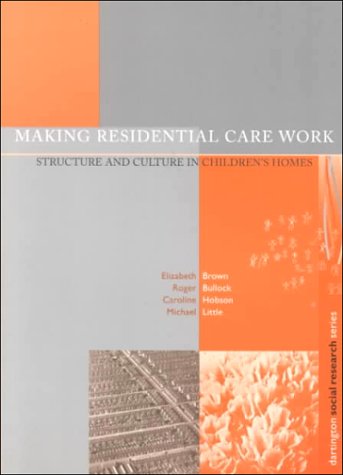Over 6,000 children live in residential homes in England and Wales, but it is proving increasingly difficult to provide them with satisfactory care. The fact that some children's homes are better than others is well established, but why should this be so? Past answers have tended to be tautologous - rather on the lines of "a good home is one where children do well; children do well because they are in a good home". This Dartington study examines various aspects of children's homes and explores the connections between them in an attempt to break down the old circular argument. Structures are discernible in the relationship between different types of goals - societal, formal and belief; the variable balance between these goals determines staff cultures, which, in turn, shape the child cultures that develop. Such relationships are important because of their close association with outcomes - whether the children do well, whether the homes prosper. The model described in the book provides a conceptual framework and a set of causal relationships that should help professionals to plan and manage residential care better and so meet the needs of vulnerable children more effectively.
- ISBN10 1840144572
- ISBN13 9781840144574
- Publish Date 25 June 1998
- Publish Status Out of Print
- Out of Print 30 November 2000
- Publish Country GB
- Publisher Taylor & Francis Ltd
- Imprint Ashgate Publishing Limited
- Format Paperback
- Pages 200
- Language English
